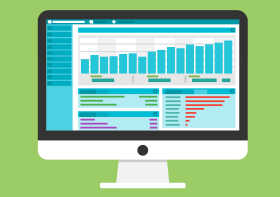How to Make Your First $1,000 Selling Digital Products Online

When I first decided to explore the idea of making money online, I was overwhelmed by the sheer number of options available. From dropshipping to affiliate marketing, the possibilities seemed endless. But one method stood out to me: selling digital products online. It seemed like the perfect blend of creativity, scalability, and low overhead costs.
Fast forward a few months, and I was able to make my first $1000 selling digital products.
Why I Chose Digital Products
Before diving into the “how,” let me explain why I chose digital products in the first place.
Here are the key reasons that made me decide this was the right path for me:
- Low Startup Costs: When I started creating and selling digital products, I was a single mom of 3. Money wasn’t something that I had a lot of. Unlike physical products, digital products don’t require inventory, shipping, or storage. All you need is a laptop and some creativity.
- Passive Income Potential: Once you create a digital product, it can generate income for years with minimal ongoing effort.
- Scalability: You can sell the same product to an unlimited number of customers without worrying about running out of stock.
- Creative Freedom: Digital products allow you to express your skills and passions, whether that’s designing templates, writing eBooks, or creating online courses.
With these benefits in mind, I knew digital products were the way to go. But the big question was: How do I actually get started?
Step 1: Finding the Right Niche
The first step in my journey was finding a niche. I knew that choosing the right niche was crucial because it would determine the demand for my product. Here’s how I approached it:
Identify My Interests and Skills
I started by making a list of things I was passionate about and skilled at. For me, that included graphic design, writing, and online marketing. I wanted to choose a niche that aligned with my strengths so I could create high-quality products.
Research Market Demand
Next, I used tools like Google Trends, Amazon Best Sellers, and social media platforms to see what people were searching for and buying. I also looked at forums like Reddit and Quora to understand what problems people were trying to solve.
Validate the Niche
Finally, I joined online communities like Facebook groups and niche-specific forums to see what people were talking about. I noticed that many small business owners were struggling with creating professional-looking social media content. This seemed like a perfect opportunity to fill a gap in the market.
Step 2: Creating My First Digital Product
Once I had my niche, it was time to create my first product. I decided to start with a pack of social media templates for small businesses. Here’s how I went about it:
Define the Product
I outlined what the templates would include—Instagram post templates, story templates, and Pinterest pin designs. I wanted to create something that was both visually appealing and easy to use.
Design the Templates
Using tools like Canva and Adobe Illustrator, I created a set of 20 professional-looking templates. I made sure they were customizable so users could easily adapt them to their brand.
Test the Product
Before launching, I shared the templates with a few friends who ran small businesses to get feedback. Their input helped me refine the designs and make them more user-friendly.
Package the Product
I organized the templates into a downloadable folder and created a simple PDF guide on how to use them. This added value to the product and made it more appealing to buyers.
Creating the product took about two weeks, but it was a rewarding process. I felt proud of what I had made and was excited to share it with the world.
Step 3: Setting Up My Online Store
With my product ready, the next step was to set up a platform to sell it. I considered using marketplaces like Etsy or Gumroad, but I wanted more control over my brand and customer experience. Here’s what I did:
Choose a Platform
I decided to use Shopify because it was user-friendly and had all the features I needed. It also allowed me to customize my store to match my brand.
Design the Store
I selected a clean, professional theme and customized it to match my brand. I added product descriptions, high-quality images, and a simple checkout process.
Set Up Payment Processing
I integrated PayPal and Stripe to accept payments securely. This made it easy for customers to purchase my product without any hassle.
Add a Download Delivery System
I used a Shopify app to automate the delivery of the digital product after purchase. This ensured a smooth customer experience and saved me time.
Setting up the store took a bit of time, but it was worth it to have a professional-looking platform that I could grow over time.
Step 4: Marketing My Digital Product
Now came the most challenging part: getting people to buy my product. I knew I couldn’t just rely on the “build it and they will come” mentality. I had to actively market my product. Here’s how I did it:
Leverage Social Media
I created Instagram and Pinterest accounts specifically for my business. I posted regularly, sharing tips for small business owners and showcasing my templates. This helped me build an audience and drive traffic to my store.
Build an Email List
I offered a freebie—a mini pack of social media templates—in exchange for email addresses. This helped me build a list of potential customers that I could market to over time.
Collaborate with Influencers
I reached out to micro-influencers in the small business niche and offered them free templates in exchange for a shoutout. This helped me reach a wider audience and build credibility.
Run Paid Ads
I started with a small budget on Facebook and Instagram ads to target my ideal audience. I experimented with different ad creatives and targeting options to see what worked best.
Engage in Online Communities
I joined Facebook groups and forums for small business owners and shared valuable content, including my templates. This helped me build relationships and establish myself as an expert in the niche.
Marketing was a learning curve, but I saw steady growth in traffic and sales as I refined my strategies.
Step 5: Making My First $1,000
After about two months of consistent effort, I hit my first $1,000 in sales. Here’s a breakdown of how it happened:
Initial Sales
The first few sales came from friends, family, and people in my network who supported my new venture. This gave me the confidence to keep going.
Social Media Growth
As my social media following grew, so did my sales. People who saw my templates in action were more likely to buy.
Email Marketing
My email list became a valuable asset. I sent out newsletters with tips, promotions, and new product announcements, which drove consistent sales.
Word of Mouth
Happy customers started recommending my products to others, which brought in more sales organically.
Reaching that $1,000 milestone was incredibly rewarding. It proved to me that selling digital products online was a viable way to make money.
Lessons I Learned Along the Way
Looking back, there were several key lessons I learned that helped me succeed:
- Start Small: I didn’t try to create a huge product line right away. Starting with one product allowed me to focus and perfect it.
- Listen to Feedback: Customer feedback was invaluable in improving my product and marketing strategies.
- Be Consistent: Success didn’t happen overnight. It took consistent effort in creating content, engaging with my audience, and refining my approach.
- Invest in Learning: I spent time learning about digital marketing, design, and e-commerce. This knowledge was crucial in growing my business.
Tips for Anyone Starting Out
If you’re thinking about selling digital products online, here are some tips to help you get started:
- Choose a Niche You’re Passionate About: It’s easier to stay motivated when you’re working on something you love.
- Focus on Solving a Problem: The best digital products solve a specific problem for a specific audience.
- Don’t Overcomplicate It: Start with one product and expand as you grow.
- Be Patient and Persistent: Building an online business takes time, but the rewards are worth it.
Final Thoughts
Making my first $1,000 selling digital products online was a huge milestone for me. It showed me that with the right mindset, strategy, and effort, it’s possible to turn an idea into a profitable business. If I can do it, so can you. Whether you’re creating templates, eBooks, courses, or any other digital product, the key is to start, stay consistent, and keep learning.
If you have any questions or want to share your own journey, feel free to leave a comment below. I’d love to hear from you!

